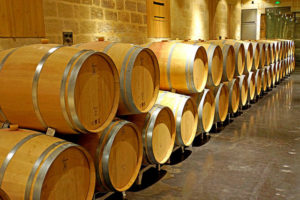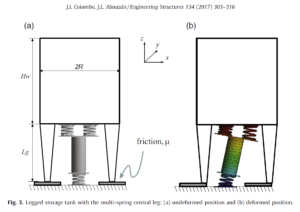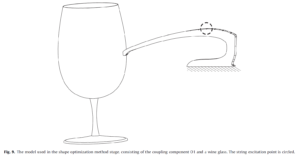It’s very difficult, if not impossible, for one single person to thoroughly review every single piece of peer reviewed literature related to wine that is published every day. This Wine Literature Review Lightning Round series presents three new papers (within the past year or two) in one post by briefly summarizing the research and linking to the abstract in order for you to pursue further if you’re interested.
WINEMAKING
“The impact of different barrel sanitation approaches on the spoilage microflora and phenols composition of wine”, published in March 2017 in the Journal of Food Science and Technology, aimed to evaluate the effects ozone and sodium hydroxide as barrel sanitizers on spoilage microorganisms and the chemical and sensory characteristics of wine stored in those barrels.
Brief Methods

Photo courtesy Flickr user Dennis Jarvis
15 barrels that had been contaminated with Brettanomyces were obtained and used in this study. The barrels were divided into three groups of five, with the following treatments for each group: 1) untreated control; 2) sodium hydroxide treatment; and 3) ozone treatment.
After the treatments, red wine was added to the barrels and stored for 97 days.
Throughout the storage time, the wine was tested for spoilage microorganisms, as well as chemical composition. After the storage period, the same measurements were taken as before, as well as a sensory analysis of the wine.
Brief Results/Conclusions
In general, Neither the sodium hydroxide nor the ozone treatments removed 100% of the spoilage organisms that had originally infected the barrels. The ozone treatment was more effective in reducing the spoilage organism population than the sodium hydroxide treatment (reduce the population to below 10%, while the sodium hydroxide treatment resulted in a population drop down to around 30%).
None of the wines appeared to suffer from “Brett character” when evaluating the levels of 4-ethylphenol and 4-ethylguaiacol, which over certain threshold levels are associated with those negative sensory characteristics. While there were some chemical differences between the different treatments, none of them affected the sensory profile of the wines.
Overall, the study found that both treatments were able to reduce the levels of spoilage microorganisms to a point where they were in levels low enough not to influence the sensory characteristics of wine stored in them. Ozone was more effective in reducing the presence of spoilage microorganisms, as well as not influencing the sensory characteristics of the aged wine. The researchers concluded by stating that ozone could be a feasible alternative to the more traditional chemical approaches to barrel sanitization for spoilage microorganisms.
Source:
ENGINEERING
“Seismic reliability of legged wine storage tanks retrofitted by means of a seismic isolation device”, published in 2017 in the journal Engineering Structures, aimed to evaluate the seismic reliability (or, how well it holds up in an earthquake) of two kinds of stainless steel storage tanks often used in winemaking, with and without devices used to minimize seismic motion impact. The researchers stated that while there has been research done on tanks that fully sit flat on the ground, there doesn’t seem to be as much on tanks that stand on legs.
Brief Methods
The two tanks evaluated in this analysis were a smaller 3,000L tank with 4 legs, and a larger 17,100L tank with 5 legs. Each tank was tested two ways: first, “as is” (or without any special seismic protection devices) and second, with a “seismic isolation system”. For this “seismic isolation system”, the legs of the tank would be placed on a surface that had a special coefficient of friction that would allow the legs to slide a bit as the ground shook. An additional multi-spring central leg was added to the tanks in this system, which was anchored
to the ground, unlike the other “normal” legs. (Think of it sort of like shocks and struts for wine tanks.) The weight load of the tank was distributed primarily around the non-anchored original legs of the wine tank. See the image to the right here for a visual representation of the system.
Mathematical models were created to simulate the weight and movement of wine in the tanks.
Computer analyses on the systems using very complicated mathematical equations which I won’t bore you with here were used to evaluate the effect of an earthquake on the structural integrity of wine tanks with and without the isolation system described in-part above.
Brief Results/Conclusions
Computer analysis indicated that using the special seismic isolation system described briefly above significantly improved the time to structural failure in an earthquake.
For the smaller tank without the seismic isolation system, it took a ground acceleration of 4.05m/s2 (close to a 5.7 magnitude earthquake) to cause structural failure (in this case, in the form of the main legs buckling). For the smaller tank using the seismic isolation system, it took a ground acceleration of 9.71m/s2 to cause significant structural damage (somewhere between a 6.0 and 7.0 magnitude earthquake), which was in this case the central leg and NOT the main legs (they did not buckle in this scenario). An acceleration of 10.31m/s2 was required for leg buckling failure for the smaller tank (probably around a 7.0 magnitude earthquake), and an acceleration of 12.23m/s2 was required for central leg failure (probably a little greater than a 7.0 magnitude earthquake).
For the larger tank without the seismic isolation system, it took a ground acceleration of 2.67m/s2 (maybe a 5.2ish magnitude earthquake) to cause buckling failure. For the larger tank using the seismic isolation system, it took a ground acceleration of 10.22m/s2 to cause buckling failure (somewhere around a 7.0 magnitude earthquake). The larger tank also suffered greater failure than the smaller tank due to the large displacement of the volume of wine inside.
Overall, the researchers concluded than legged tanks on the ground “as-is” were not as reliable in an earthquake than those legged tanks with the special base consisting of a special-surfaced floor and an anchored spring leg in the center. Additionally, smaller tanks were more reliable in an earthquake than larger tanks.
*Note: the earthquake magnitudes mentioned above were super-duper rough conversions I made based on real data. They could very well be off, so the actual acceleration values would be more accurate to use if you’re actually looking into this topic further.
Source:
PHYSICS…OR MUSIC?
“Wine glass sound excitation by mechanical coupling to plucked strings”, published in 2017 in the journal Applied Acoustics, aimed to evaluate the acoustics of a wine glass and to make an instrument out of wine glasses. You know, the really tough science.
Brief Methods
While I made a little snide remark about this being really tough science, this study did actually use quite a bit of complicated mathematical equations and modeling, so while it may not seem like the most productive way to spend research dollars, the way they went about doing it was certainly legit.
To make this wine glass instrument, the researchers did it two different ways: one in which strings were in direct contact with wine glasses, and another in which strings were attached to a “bridge” of sorts which was ultimately touching the wine glass (so there was an actual physical separation between the strings and the glass).
Wine glasses of different sizes and shapes were tested, as were varying lengths of strings
and shapes of the bridges connecting the glass and strings.
Note: I’m leaving out a TON of detail in the interest of space and time, so feel free to read the actual study if you’re so inclined.
Brief Results
The researchers concluded from their experiments with varying strings, bridges, and wine glasses, that using a bridge between the strings and the wine glasses resulted in higher intensity sounds than having the string touch the wine glass directly when Bordeaux-style glasses were used. On the other hand, when shorter and wider glass was used (like a Burgundy/Pinot Noir style), this bridge did not improve the sound quality.
The researchers mentioned that the sound coming from this wine glass string instruments were like that of a sitar.
Now, thanks to this research, we can play our wine glasses in more complicated ways than simply running a finger over the rim!
Source:


